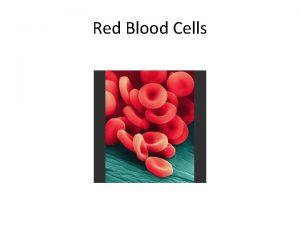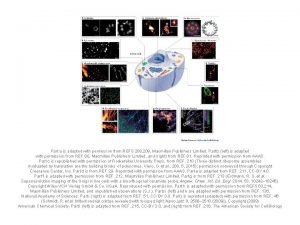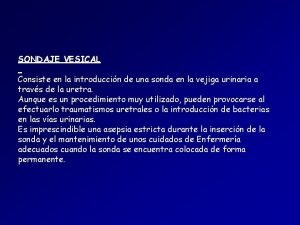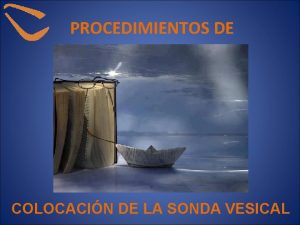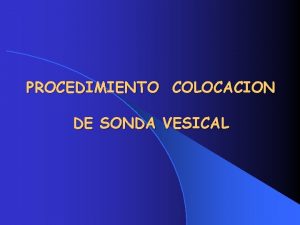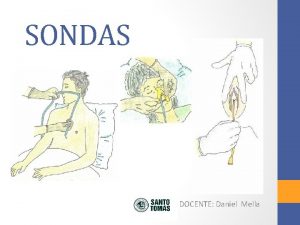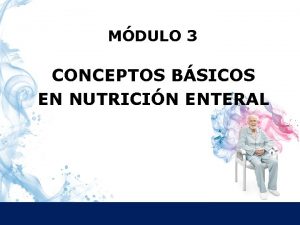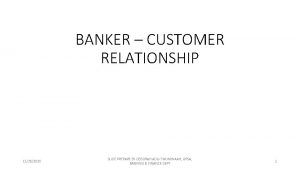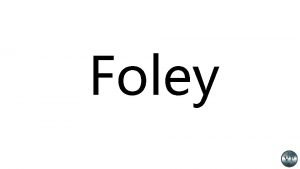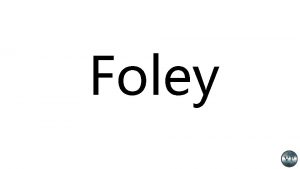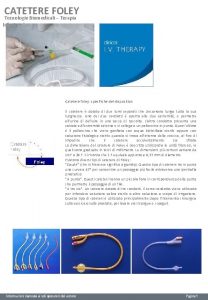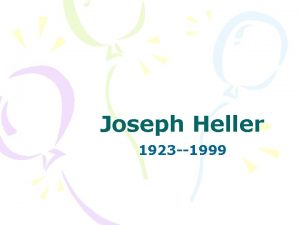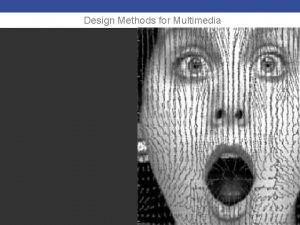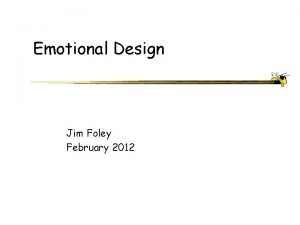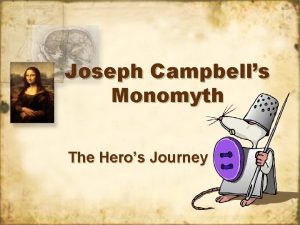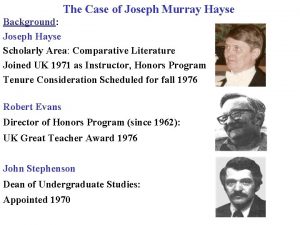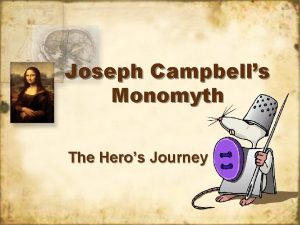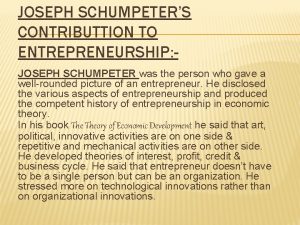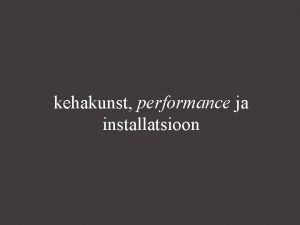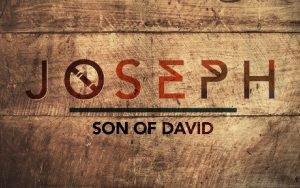Design Methods Joseph T Foley foley Adapted from






























- Slides: 30

Design Methods Joseph T. Foley <foley> Adapted from Chris Brown (WPI)

Design Methods • TRIZ: "Teoriya Resheniya Izobretatelskikh Zadatch" (теория решения изобретательских задач) • Axiomatic Design • Taguchi House of Quality • ADAPT (Mercedes R&D) – Genrich Atshuller – Genichi Taguchi • Design Thinking at Stanford’s Dschool and DTU • CK Theory (conceptknowledge) – Armand Hatchuel, Benoit Weil, etal. – Nam Pyo Suh, MIT and KAIST • Collective System Design – David S. Cochran, Purdue Fort Wayne – AD and SCRUM • Iteration (traditional) – CDIO – Rapid prototyping

Axiomatic Design Nam P. Suh - MIT ME Department Chair - NSF Engineering Director - President of KAIST - Honorary doctorate from WPI in 1986 • Discovered the Axioms in the late 70 s at MIT – Looked for commonalities in good designs • Premise: good engineering design is based on – self-consistent axioms that – lead to the best solutions for all design problems. Picture from ICAD 2017: Iasi, Romainia

Collective System Design David S. Cochran - Purdue Fort Wayne - Director of Center of Excellence in Systems Engineering • Discovered that AD was hard to teach to industry people and often they found it confusing • Simplified process and terminology, focus on Design Decomposition and developing with all invested parties – Design Parameter became Physical Solution Picture from ICAD 2018: Reykjavik University

REFERENCES Recommended texts • Suh, N. P. , The Principles of Design, Oxford, 1990 • Suh, N. P. , Axiomatic Design: Advances and Applications, Oxford, 2001 • Suh, N. P. , Complexity: Theory and Applications, Oxford, 2005 • Coming 2020: Design and Engineering Science (Suh, Cavique, Foley)

What is design? customer functional physical CNs Customer Needs What is demanded? FRs Functional Requirements What it does DPs Design Parameters What it looks like PSs Physical Solutions “Product Design and Development” by Ulrich and Eppinger process PVs Process Variables How it is made Axiomatic Design: Advances and Applications By Suh

Customer Needs • • Figure out the “real customer”: heavy impact What drives them? What problem do they have? What do they NEED?

CN Exercise • Customer statement: “It’s really hard to get my kids to school on time” • Describe the customer • What is problem and impact? • Develop a top level need (CN 0) and decompose into smaller pieces (CN 1 -CN 7)

The axioms • Axiom 1, the independence axiom: – “Maintain the independence of the functional requirements” – Enforce modularity • Axiom 2, the information axiom: – “Minimize the information content of the design” – Pick the simplest, most reliable solution

Axiom 1 - Independence • • Provides for adjustability and control Avoids unintended consequences Modularity: minimize premature optimization Team can progress on any part without delays

Axiom One Breakthrough Design Solution in Naval Warfare - March 1862 Monitor defeats Virginia American Civil War • Steam power makes locomotion independent from wind (decouples) • uncoupled design defeats greater size and fire power

New FR: Adjust direction of fire New DP: Swivel turret March 9, 1862 Fixed directions of fire THE CAPTAIN OF THE VIRGINIA ACCUSES THE CAPTAIN OF THE MONITOR OF NOT BEING A GENTLEMAN

FR Exercise • Continue with “hard to get kids to school” • Develop “Functional” Requirements – What needs to happen? (not how to do it) • FR 0 is a top level strategy e. g. “fasten two boards together” • Decompose into smaller pieces FR 1 -FR 7

Axiom 2 - Information • KISS: Keep it Simple, Stupid! – Reduce uncertainty ≈ reduce complexity • Always pick the best stuff – maximizing the probability of success achieving the FRs – Ask: “What needs the least maintenance and lasts the longest? ” • Robust design – Compensate for errors – Minimize effect of wear, temperature, environment

EXAMPLE: CLAMPING MECHANISM AND SPRING FR clamping force, F F linear spring k Design equation F=k. X close DP displacement, X (major-minor axis)

TRANSLATING TOLERANCES: FRS TO DPS softer spring, k 2 , results in a larger tolerance, and therefore lower information FR F F FR tolerance k 1 k 2 Breakage Slip X F=k DP tolerance X ΔX DP

Separate Function (FR) and Physical (DP) • Fundamental to Axiomatic Design • FRs cannot contain physical information – Maximize the solution space – The DP is the physical design solution • Common problem with beginning students… – FR provide bolt – DP bolt • State the FR to provide the largest possible space for the design solution – FR fasten parts – DP: bolt, rivet, screw, glue, clamp, press fit, or solder

DP/PS Exercise • Continue with “hard to get kids to school” • Based upon each of the previous FR’s, try to come up with a physical solution • Examples: motors, transmissions, glue, hash table, linked list • Top level technology/approach: DP 0 • Decompose into DP 1 -DP 7

Constraints • Intentionally limit the solution space • Can influence elements in functional, physical and process domains: multi-FR • Do not take DPs • Input type: design specifications – Examples: Cost, time size • System type: system or environment – Examples: humidity, water resistance, electrical interference

Decomposition rules • CEME min Collectively Exhaustive, Mutually Exclusive, minimum • Decomposition equations – Σ children = Parent (or some combination of the children equal the parent) – Child ≠ Parent (no orphans, no clones) – No more than 7 children per parent

Design Decomposition CN 0 FR 0 PS 0 Each arrow is a dependency CN 1 CN 2 CN 3 CN 4 FR 1 FR 2 FR 3 CON 3 FR Metric: test PS 1 PS 2 PS 3 PS Metric: parameter Constraint: System or Environmental?

Uncoupled: Modular CN 0 FR 0 CN 1 CN 2 CN 3 FR 1 FR 2 FR 3 PS 1 PS 2 PS 3 PS 0 Each arrow is a dependency Order of implementation doesn’t matter

Decoupled: Path-dependant CN 0 FR 0 CN 1 CN 2 CN 3 FR 1 FR 2 FR 3 PS 1 PS 2 PS 3 PS 0 Each arrow is a dependency Order matters! Left to right.

Coupled: Problematic CN 0 FR 0 CN 1 CN 2 CN 3 FR 1 FR 2 FR 3 PS 0 Each arrow is a dependency No clear order for design! Delays! Change FR or DP to remove Increase or decrease number of FR-DP Optimization might find a working combo PS 1 PS 2 PS 3

Possible Design Decomposition CN 0 FR 0 PS 0 Each arrow is a dependency CN-FR can be many-to-1 CN 2 CN 3 CN 4 CN 5 FR 1 FR 2 FR 3 FR 4 FR 5 PS 1 PS 2 PS 3 PS 4 PS 5 CON 1 CON 2

Collective System Design Exercise • Notice that each FR and DP has a ‘metric’ • Fill this in with a tolerance range, testing strategy, or other mechanism to check if it is met. • When should you stop decomposing? – You are confident in estimating how long the task will take to complete a DP.

CSD: Apply Axiom 1 “Independence” • Can you get rid of the coupling lines that don’t point straight up? • Can you ensure that the ordering always has the arrows point to the right or up?

CSD: Apply Axiom 2 “Information” • How will you calibrate/reset the system? • Can you increase the range or environment where the FR is met? • Can you better define the DP/PS’s performance to match the FR?

Next Step • Once your group has developed a concept for your final project, apply this process again. • The FR-DP mapping can be very useful for the tasks that will be done during a sprint.

• • ONLINE RESOURCES FOR AXIOMATIC DESIGN Prof. Joseph T. Foley Axiomatic Design wiki https: //projects. cs. ru. is/projects/axiomatic-design/wiki/ Axiomatic Design mailing list https: //list. ru. is/mailman/listinfo/axiomatic-design ICAD 2018 Videos https: //livestream. com/ru/icad 2018 • • • • • Prof. Christopher A. Brown Video books for purchase from Retrieve. com http: //myknowledgeapps. com/app/elements-of-axiomatic-design/ An Introduction to Axiomatic Design https: //www. youtube. com/watch? v=Wiimzx. RJh. Ws a workshop for pre-university educators Teaching Axiomatic Design: Part 1 - Introduction Teaching Axiomatic Design: Part 2 - Building Solutions Teaching Axiomatic Design: Part 3 - Axiomatic Design Teaching Axiomatic Design: Part 4 - Addressing Limitations Teaching Axiomatic Design: Part 5 - Customer Needs Teaching Axiomatic Design: Part 6 - Creating Value Teaching Axiomatic Design: Part 7 - The Axioms Teaching Axiomatic Design: Part 8 - Decomposition https: //www. youtube. com/watch? v=b. FIMa. Hr. J 8 No https: //www. youtube. com/watch? v=h. N 1 S 1 ba. Qyo 0 https: //www. youtube. com/watch? v=e. AGOGjpo. QRI https: //www. youtube. com/watch? v=Ze. Ce. Dad. Bqvs https: //www. youtube. com/watch? v=pd. Ir 5 x. JNKdc https: //www. youtube. com/watch? v=_Uo. WQBg-38 o https: //www. youtube. com/watch? v=Pw. HULkom. AU 0 https: //www. youtube. com/watch? v=r. OLSIWFj 54 c basic content for a first course in Axiomatic Design MFE 594 An Introduction to Axiomatic Design Part 1 MFE 594 An Introduction to Axiomatic Design Part 2 MFE 594 An Introduction to Axiomatic Design Part 3 MFE 594 An Introduction to Axiomatic Design Part 4 https: //www. youtube. com/watch? v=x. Ccys. LQ 0 d. Gk https: //www. youtube. com/watch? v=g. FGZz 3 Qt. VJ 8 https: //www. youtube. com/watch? v=0 mm 7 x_g. Jy. K 8 https: //www. youtube. com/watch? v=q. URM 1 A 1 BZJw • • Prof. Nam Suh ICAD 2013 Keynote with Nam Suh https: //www. youtube. com/watch? v=x. SI 8 Ux. Si 5 e. M • • Prof. Dominik Matt Axiomatic Design for Sustainable and interdisciplinary building design https: //www. youtube. com/watch? v=_tw 2 DMAn. Sz. E • • Prof. Aurelian Vadean Design Improvement of Hybrid Composite Joints by Axiomatic Design https: //www. youtube. com/watch? v=8 wz 6 Lsq. Gr 2 I
 This passage is adapted from jane austen
This passage is adapted from jane austen How is a red blood cell adapted
How is a red blood cell adapted Adapted with permission from
Adapted with permission from In what ways have the highland maya adapted to modern life?
In what ways have the highland maya adapted to modern life? Xerophytic plants diagram
Xerophytic plants diagram Climate of the chaparral biome
Climate of the chaparral biome Camel adaptations for survival
Camel adaptations for survival Sausage shaped organelles
Sausage shaped organelles Brother quotes from brother
Brother quotes from brother Adapted from the internet
Adapted from the internet Gallant
Gallant How have plants adapted to the rainforest
How have plants adapted to the rainforest Spermopsida
Spermopsida The outsiders adapted for struggling readers
The outsiders adapted for struggling readers Identify synoynm
Identify synoynm How are giraffes long necks adapted to their lifestyle
How are giraffes long necks adapted to their lifestyle Fabrication of wax pattern
Fabrication of wax pattern How to write order for foley catheter
How to write order for foley catheter Nuala foley
Nuala foley Reeducacion vesical sonda foley
Reeducacion vesical sonda foley Sonda vesical circuito cerrado
Sonda vesical circuito cerrado Reeducacion vesical sonda foley
Reeducacion vesical sonda foley Who killed dr john yelenic
Who killed dr john yelenic Sonda nelaton pediatrica calibre
Sonda nelaton pediatrica calibre Tim foley nvidia
Tim foley nvidia Foley catether
Foley catether Colocacion de sonda nasogastrica
Colocacion de sonda nasogastrica Austin foley
Austin foley Tim foley nvidia
Tim foley nvidia Commercial law outline
Commercial law outline Joachimson case
Joachimson case

